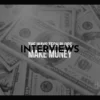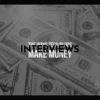Cracking the Code to Hiring Rockstars (and Keeping Them!)
Finding great employees today feels like searching for a unicorn riding a skateboard – rare and slightly absurd. Between the ever-shifting job market and candidates with wish lists longer than a CVS receipt, snagging top talent can feel like an uphill battle in roller skates. But fear not, intrepid business leaders! This guide is your cheat sheet to not just finding good employees, but keeping them happy, motivated, and maybe even a little bit loyal. Let’s dive into the nitty-gritty of recruitment, selection, and employee management, shall we?
I. Recruitment Methods and Strategies: Where to Find Your Unicorns
Gone are the days of just slapping an ad in the newspaper and waiting for the floodgates to open. Recruiting in this century is a multi-channel endeavor, a bit like fishing with a dozen rods in different parts of the lake – you’ve got to be everywhere the fish might be biting.
Online Platforms: Your Digital Fishing Nets
The internet, bless its chaotic heart, has revolutionized recruitment. If you’re not online, you’re essentially invisible to a huge chunk of the talent pool.
Job Boards: The Old Reliables (But Still Good!)
Think of job boards like Indeed, LinkedIn, Glassdoor, ZipRecruiter, Monster, CareerBuilder, and SimplyHired as the digital equivalents of your local classifieds, but on steroids. Most employers, and rightfully so, start here. Cast a wide net! These platforms are still goldmines for reaching a broad audience actively looking for jobs. Don’t underestimate the power of the classics.
Company Website: Your Digital Front Door (Make it Welcoming!)
Your company website isn’t just for showing off your ‘About Us’ story or pushing products. It’s your prime real estate for attracting talent. Your career page should be more than just a dusty corner; it should be a vibrant, SEO-friendly showcase of why people should want to work for *you*. Think of it as your digital “Help Wanted” sign, but way more sophisticated.
Social Media: Where Your Next Hire Might Be Scrolling Right Now
Social media isn’t just for cat videos and political debates. Platforms like LinkedIn (obviously), Facebook, and even Instagram can be surprisingly effective recruitment tools. Think of it as fishing where the fish *actually* are – in their natural habitat, casually scrolling through their feeds. Targeted ads and engaging content can turn passive scrollers into eager applicants. Who knew memes could land you a CFO?
Employee Referrals: Tapping Your Internal Network (Your Best Resource!)
Your current employees are walking, talking, and hopefully enthusiastic billboards for your company. Employee referrals are consistently one of the most effective ways to hire. Why? Because good people usually know other good people. Plus, it’s a testament to your company culture if your employees are willing to vouch for you.
Incentive Programs: Sweetening the Deal (For Your Employees, Too!)
Want to supercharge your employee referral program? Incentives are your secret weapon. Bonuses, rewards, extra vacation days – whatever floats your employees’ boats. Happy employees + enticing rewards = a pipeline of potentially great candidates. It’s a win-win, like finding a twenty in your old jeans.
Networking: Get Out There and Mingle (Professionally, of Course!)
Networking isn’t just for making sales and finding business partners; it’s also a fantastic way to uncover talent. Think of it as your real-world fishing expeditions.
Professional Networking Sites (LinkedIn, Again!): Your Online Mingling Hub
LinkedIn isn’t just for stalking ex-colleagues and pretending to be busy. It’s a powerhouse for professional networking and talent sourcing. Use it to actively search for candidates, engage in industry discussions, and build your professional brand. It’s like a never-ending networking event, without the awkward small talk and questionable canapés.
Networking Events and Conferences: Real-World Connections (and Free Coffee!)
Don’t underestimate the power of face-to-face interactions. Networking events and industry conferences are prime locations to meet potential candidates, especially those who are proactive and ambitious. Plus, free coffee and lukewarm pastries are usually a bonus.
Direct Advertising: Shout It From the Digital Rooftops
Direct advertising, including those SEO-friendly job ads we talked about, is all about getting your message directly to the people you want to reach. Think targeted, think specific, think “laser beam precision” instead of “shotgun approach.”
SEO-Friendly Job Ads and Career Pages: Making Google Your Best Friend
In the digital age, if Google can’t find your job ads, good luck to you. Design your job postings and career pages with SEO in mind. Use relevant keywords, clear language, and make it easy for search engines (and candidates) to find you. It’s like leaving breadcrumbs for talent to follow straight to your door.
Niche Candidate Networks: Finding Your Specific Breed of Unicorn
Sometimes, you need a very specific type of unicorn – say, one that specializes in blockchain and also juggles flaming torches. Niche candidate networks are your secret weapon for finding these highly specialized individuals. Think industry-specific job boards, professional associations, and online communities.
Recruitment Agencies: Outsourcing the Hunt (When You’re Too Busy Fishing)
Recruitment agencies are like hiring professional fishermen when you’re too busy running the fish market. They can be invaluable, especially for small businesses that don’t have dedicated HR resources. Agencies have the networks and expertise to find candidates you might miss.
Talent Pool Databases: Building Your Own Talent Goldmine
Think of a talent pool database as your company’s personal Rolodex of potential hires (for those who remember Rolodexes). Building a candidate database, whether through your own efforts or using specialized software, allows you to keep track of promising candidates for future opportunities. It’s like having a farm team of future MVPs.
Boomerang Employees: Welcome Back to the Fold!
Don’t forget about your past employees! Boomerang employees – those who left and are now considering returning – can be a fantastic source of talent. They already know your company culture, require less onboarding, and might bring fresh perspectives from their experiences elsewhere. It’s like a sequel – sometimes, it’s even better than the original.
Hiring Freelancers: Flexibility is Your Friend
Can’t find a full-time employee for a specific role? Consider hiring freelancers. The gig economy is booming, and there’s a vast pool of skilled freelancers ready to jump in for project-based work. It’s like renting talent instead of buying – perfect for short-term needs or specialized skills.
Maximize Job Postings Visibility: Don’t Be a Wallflower
Creating a job posting is only half the battle. Make sure it’s *visible*. Use relevant job titles, promote it across multiple channels, and consider paid advertising to boost its reach. Don’t let your perfect job posting languish in the digital shadows.
II. Effective Employee Selection Methods: Sorting the Gold from the Glitter
Finding candidates is one thing; selecting the *right* ones is another. Effective employee selection methods are crucial to ensure you’re not just hiring warm bodies, but individuals who will thrive and contribute to your company’s success. Think of it as the talent Olympics – you’re looking for the gold medalists.
Cognitive Strengths Test: Brainpower Check
Cognitive strengths tests assess a candidate’s mental abilities – things like reasoning, problem-solving, and critical thinking. It’s like giving their brain a workout to see how it performs under pressure.
Candidate References: The Backstory Check
Don’t skip those candidate references! They’re not just formalities. References can provide valuable insights into a candidate’s past performance, work ethic, and personality. It’s like getting a sneak peek at their resume’s “director’s cut.”
Personality Assessment: Peeking Under the Hood
Personality assessments can help you understand a candidate’s behavioral tendencies, work style, and how they might fit into your team’s dynamics. It’s like reading their user manual before you plug them in.
Job Knowledge Evaluations: Do They Know Their Stuff?
Job knowledge evaluations test a candidate’s specific knowledge and skills related to the job. It’s like giving them a pop quiz to see if they’ve actually done their homework.
Situational Judgment Test: What Would They Do?
Situational judgment tests present candidates with hypothetical work scenarios and ask them how they would respond. It’s like putting them in a virtual reality simulation of the job to see how they navigate real-world challenges.
Internships or Apprenticeships: The Try-Before-You-Buy Approach
Internships and apprenticeships are excellent ways to assess candidates in a real work environment before making a full-time commitment. It’s like a working interview, allowing both you and the candidate to see if it’s a good fit.
Background Checks: Due Diligence is Key
Background checks are essential for verifying a candidate’s history and ensuring you’re making a safe and informed hiring decision. It’s like running a quick antivirus scan before you fully integrate them into your system.
Internal Processes and Referrals: Trust Your Gut (and Your Team)
Don’t underestimate the value of internal processes and referrals in the selection process. Your team’s insights and established hiring procedures can be incredibly helpful in identifying the best candidates.
Application Reviews: The First Hurdle
Application reviews are the initial screening process – weeding out those who don’t meet the basic requirements. It’s like the first round of auditions, separating the serious contenders from the… well, the rest.
Phone Screenings: The Quick Vetting
Phone screenings are a quick and efficient way to narrow down the candidate pool before investing in in-person interviews. It’s like a first-date phone call – a chance to see if there’s enough spark to warrant a real date (interview).
One-on-One Interviews: The Deep Dive
One-on-one interviews are where you get to really dig deep, assess a candidate’s skills, experience, and cultural fit. It’s your chance to have a meaningful conversation and see if they’re truly the right person for the job.
Skills Assessment: Show Me What You Got!
Skills assessments are practical tests to evaluate a candidate’s abilities in action. It’s like asking a chef to cook you a dish instead of just talking about their culinary skills.
III. Addressing Challenges in Finding Employees: Why is Everyone Hiding?
Finding employees in today’s market is like playing hide-and-seek, except everyone is really, really good at hiding, and sometimes you suspect they’ve just left the game entirely. Several factors contribute to the current hiring challenges, making it feel like you’re searching for a needle in a haystack… made of other needles.
Tight Labor Market & Skill Shortages: Too Many Jobs, Not Enough People
We’re in a tight labor market, meaning there are more job openings than qualified candidates to fill them. Combine that with skill shortages – the gap between the skills employers need and the skills job seekers possess – and you’ve got a perfect storm. It’s like having a party but realizing you forgot to invite anyone.
Low Unemployment: Slim Pickings
Low unemployment sounds great for the economy, but it means fewer people are actively looking for work. This translates to a smaller pool of candidates to choose from. It’s like going to the grocery store and finding all the shelves are mostly bare.
Skills Gap: The Mismatch
The skills gap is a significant challenge. Many industries, especially tech and specialized fields, struggle to find candidates with the specific skills and experience they need. It’s like needing a plumber but only finding electricians.
Pandemic-Related Shifts: The Great Reshuffle
The pandemic triggered massive shifts in the workforce. Some people left the workforce, others changed careers, and many re-evaluated their priorities. This reshuffling created further talent shortages in certain sectors. It’s like everyone suddenly decided to rearrange the furniture in the job market, leaving everything a bit chaotic.
Evolving Employee Expectations: It’s Not Just About the Paycheck Anymore
Employee expectations have evolved, and companies need to keep up. It’s no longer just about salary; candidates are looking for much more. Think of it as upgrading from a basic flip phone to the latest smartphone – expectations are higher, features are essential.
Workplace Flexibility: Location, Location, Location (Or Lack Thereof!)
Workplace flexibility is no longer a “nice-to-have” perk; it’s often a deal-breaker. Remote work, hybrid models, and flexible hours are increasingly important to employees. Companies that resist flexibility risk losing out on top talent. It’s like insisting on horse-drawn carriages when everyone else is driving cars.
Work-Life Balance: Life > Work (Shocking, We Know!)
Work-life balance is a major priority for today’s job seekers. They’re not just looking for a job; they’re looking for a life that includes work, but isn’t *consumed* by it. Companies that offer competitive benefits and policies that support work-life balance have a distinct advantage. It’s about offering a life, not just a living.
Company Culture: Good Vibes Only, Please
A positive and inclusive workplace culture is crucial for attracting and retaining employees. People want to work in environments where they feel valued, respected, and supported. Toxic cultures are talent repellant. It’s about creating a workplace people *want* to be in, not just *have* to be in.
Growth Opportunities: Climbing the Ladder (or at Least Seeing It)
Employees want to see opportunities for career advancement and professional development within a company. Stagnant roles and dead-end jobs are major turn-offs. Provide pathways for growth, skill development, and career progression. It’s about offering a career journey, not just a job.
The Gig Economy and Entrepreneurship: The Rise of the Independent Workforce
The rise of the gig economy and entrepreneurship has created more competition for traditional employers. Many talented individuals are choosing to work independently or start their own businesses, reducing the pool of available employees. It’s like your talent pool suddenly branched off into several smaller, independent streams.
Increased Competition: Everyone’s Hiring (And Everyone’s Leaving)
Increased competition for talent means companies are vying for the same pool of candidates. This drives up salaries, benefits expectations, and the overall cost of hiring. It’s a talent war out there, and you need to bring your A-game.
Talent War: Show Me the Money (and the Perks!)
The talent war is real. Companies are competing fiercely for top talent, leading to higher salary demands and benefits expectations. Candidates know their worth and are leveraging the competitive market to their advantage. It’s a seller’s market for talent, and you need to be prepared to pay the premium.
Hiring Process Issues: Don’t Make Them Jump Through Hoops (Unless They’re Trained Seals)
A lengthy or poorly managed hiring process can deter even the most enthusiastic candidates. In today’s fast-paced world, candidates don’t have the patience for drawn-out, convoluted hiring procedures. Streamline your process, be responsive, and make it a positive experience. Otherwise, you risk losing top talent to companies with smoother operations.
Tedious Hiring Process: Time is of the Essence
A tedious hiring process is a major turn-off. Multiple rounds of interviews, lengthy application forms, and slow response times can frustrate candidates and send them running to your competitors. Keep it efficient, keep it respectful of their time, and keep it moving.
Difficulty in Identifying Top Talent: Sorting Wheat from Chaff
Identifying top talent in a competitive market is challenging. Resumes can be deceiving, interviews can be rehearsed, and it’s not always easy to spot the true stars. Implement robust selection methods and trust your instincts.
Poor Job Descriptions: Vague is Vague
Vague or poorly written job descriptions are a recipe for disaster. They deter qualified candidates from applying and attract the wrong applicants. Be clear, be specific, and be compelling in your job descriptions. Tell candidates exactly what you need and why they should be excited about the role.
Low Visibility: Lost in the Noise
If your job postings are buried in the digital abyss, you’re missing out on potential talent. Low visibility means you’re not reaching the right candidates through your recruitment efforts. Maximize your job posting visibility by using the right platforms, optimizing for search engines, and actively promoting your openings.
IV. Employee Motivation and Retention: Keeping the Rockstars Rocking
Hiring is only half the battle. Keeping your employees motivated and engaged is crucial for long-term success. Employee retention isn’t just about preventing turnover; it’s about creating an environment where people *want* to stay, contribute, and grow. Think of it as nurturing your garden – you need more than just seeds; you need water, sunlight, and good soil. To keep your team humming, remember these key principles: * **Make your business a pleasant place to be.** Nobody wants to spend their days in a dreary, soul-crushing environment. * **Be a respectful, honest, and supportive manager.** Treat your employees like humans, not just resources. * **Offer employee rewards.** Recognize and appreciate their contributions. * **Give them room to grow.** Provide opportunities for development and advancement. * **Share positive feedback.** Let them know they’re doing a good job. * **Be transparent.** Open communication builds trust. * **Offer flexible scheduling.** Support their work-life balance. * **Offer food in the workplace.** Happy stomachs, happy employees (sometimes). Now let’s dive deeper into some specific strategies:
Clear Expectations and Goals (SMART Goals): Setting the Course
Setting clear expectations and goals is fundamental for employee motivation and performance. Employees need to know what’s expected of them and how their work contributes to the bigger picture. * **Ensure the employee understands their role and responsibilities.** No mind-reading games, please. * **Use SMART goals:** Specific, Measurable, Achievable, Relevant, and Time-bound. Vague goals lead to vague results.
Opportunities for Growth and Challenge: Keep Them Engaged and Growing
Stagnation is the enemy of motivation. Provide opportunities for employees to develop their skills, take on new challenges, and advance their careers. * **Skill Development:** Offer training, mentorship, and opportunities to learn new skills. Invest in their growth. * **Career Progression:** Discuss potential career paths within the company and help them create a plan for advancement. Show them there’s a future here. * **Give more responsibility:** Challenge them with new tasks and projects to keep them engaged and prevent boredom. Stretch them, don’t break them.
Regular Feedback and Recognition: The Fuel of Motivation
Regular feedback and recognition are essential for keeping employees motivated and feeling valued. Don’t wait for annual reviews; provide ongoing feedback, both positive and constructive. * **Offer both positive and constructive feedback.** Help them understand their strengths and areas for improvement. Be honest, be kind, be helpful. * **Acknowledge Achievements:** Recognize and celebrate successes, big and small. A little “thank you” goes a long way.
Supportive Work Environment: Creating a Thriving Ecosystem
A supportive work environment is crucial for employee well-being and motivation. Foster a culture of open communication, teamwork, and fair treatment. * **Foster open communication:** Encourage employees to express their opinions, concerns, and ideas. Listen to them. * **Ensure fair treatment:** Treat all employees with respect, regardless of their performance or background. Fairness is non-negotiable.
V. Leadership Attributes: The Captains of the Ship
Effective leadership is the backbone of any successful team and company. While there are countless leadership qualities, three stand out as foundational: * **Courage:** Leaders need the courage to make tough decisions, take risks, and stand up for what they believe in. * **Integrity:** Integrity is non-negotiable. Leaders must be honest, ethical, and trustworthy. * **Communication:** Effective communication is essential for leaders to inspire, motivate, and guide their teams. Listen as much as you talk. These three attributes – courage, integrity, and communication – form the bedrock of strong leadership.
VI. Key Considerations for Recruiters/Employers: The Big Picture
Recruiting and employee management aren’t just about filling positions; they’re about building a thriving, high-performing organization. Here are some key models and rules to keep in mind:
The 3 C’s of Recruitment: Competence, Character, and Chemistry
When evaluating candidates, consider the “3 C’s”: * **Competence:** Can they do the job? Do they have the skills and experience required? * **Character:** Will they do the job in a way that aligns with your company values? Are they ethical and trustworthy? * **Chemistry:** Will they work well with others, especially within their team? Do they fit your company culture? The intersection of these three C’s is where you find truly great hires.
The 5 C’s: Expanding the View
Beyond the 3 C’s, consider the “5 C’s,” especially when preparing candidates for interviews: * **Character** (Still crucial!) * **Culture Fit:** Do they align with your company culture and values? * **Career Direction:** Are their career goals aligned with the opportunities your company offers? * **Competence** (Still essential!) * **Communication Skills:** Can they communicate effectively and professionally? These 5 C’s provide a broader framework for evaluating candidates and ensuring a holistic fit.
The 4 R’s Model: Recruit, Retain, Reskill, Redesign
The “4 R’s Model” by Josh Bersin Company offers a strategic framework for talent management: * **Recruit:** Attract and hire the right talent (we’ve covered this extensively!). * **Retain:** Keep your best employees engaged and motivated (also covered!). * **Reskill:** Invest in employee development and training to adapt to changing skill needs. * **Redesign:** Re-evaluate organizational structures and job roles to optimize talent utilization and performance. This model emphasizes a holistic and strategic approach to talent management.
The Rule of Three: Narrowing Down the Choices
The “Rule of Three” suggests that managers should select new hires from the top three available candidates. This encourages a focused and deliberate hiring decision, rather than settling for less-than-ideal candidates.
Importance of a Prompt Response (Two-Day Rule): Speed Matters!
The “Two-Day Rule” highlights the importance of a prompt response in recruiting. Candidates who receive a response from an employer within two days of applying are significantly more likely to accept interviews and job offers. Speed and responsiveness are key to winning the talent race.
VII. Specific Factors for Small Businesses: Nimble and Smart
Small businesses have unique advantages and challenges when it comes to recruitment and employee management. Here are some specific factors to consider: * **Highlight company culture:** Small businesses often have tighter-knit cultures and more personal work environments. Emphasize these aspects to attract candidates who value community and connection. Let your unique culture shine! * **Offer unique employee perks:** Small businesses may not be able to compete on salary alone, but they can offer unique perks and benefits that larger companies can’t match. Think flexibility, autonomy, unique experiences, or profit sharing. Get creative with your perks! * **Strategize Onboarding:** Onboarding is crucial for all businesses, but especially for small businesses where every employee has a significant impact. Ensure a smooth and positive onboarding process to integrate new hires into the team and company culture. Make them feel welcome from day one!
VIII. Addressing Underperforming or “Lazy” Employees: Turning Things Around
Dealing with underperforming or seemingly “lazy” employees is a challenge every manager faces. Before jumping to conclusions, consider these motivational strategies: * **Establish Clear Expectations and Goals:** (Yes, we’re back to this! It’s that important.) Ensure the employee understands what’s expected of them and how their work contributes to the team’s goals. Use SMART goals, always. * **Offer Opportunities for Growth and Challenge:** Is the employee bored? Are they unchallenged? Provide opportunities for skill development and more engaging tasks. Sometimes “laziness” is just untapped potential waiting to be sparked. * **Provide Regular Feedback and Recognition:** Are they getting enough feedback? Do they feel appreciated? Regular feedback, both positive and constructive, can be a powerful motivator. * **Ensure a Supportive Work Environment:** Is the work environment toxic? Are they feeling unsupported? A negative work environment can demotivate even the most enthusiastic employees. Fix the environment, not just the employee. * **Address Performance Issues Directly (Performance Improvement Plan):** If performance issues persist despite these efforts, address them directly with a Performance Improvement Plan (PIP). A PIP should outline clear goals, timelines for improvement, and consequences for continued underperformance. Be clear, fair, and supportive, but also firm. Finding and keeping great employees isn’t rocket science, but it does require a strategic, thoughtful, and human-centered approach. By implementing these strategies, you can build a team of rockstars who are not only talented but also motivated, engaged, and loyal – ready to help your business reach for the stars. Now go forth and conquer the talent battlefield!





